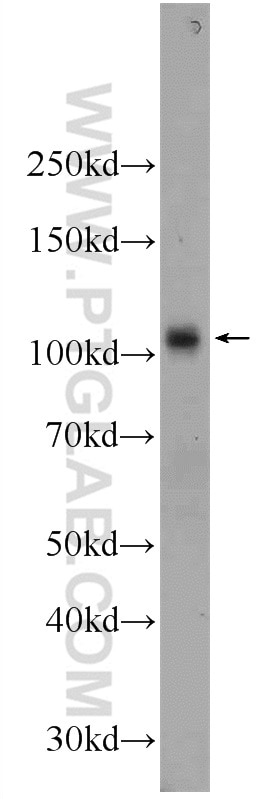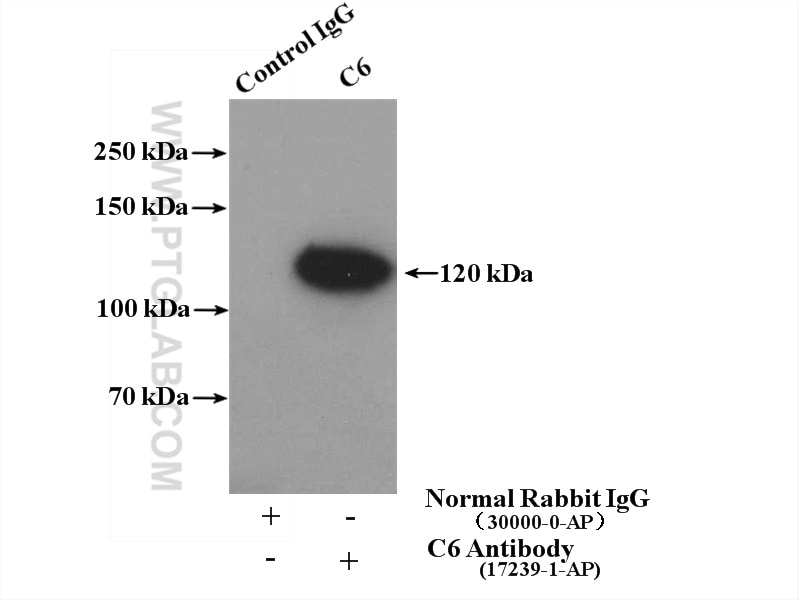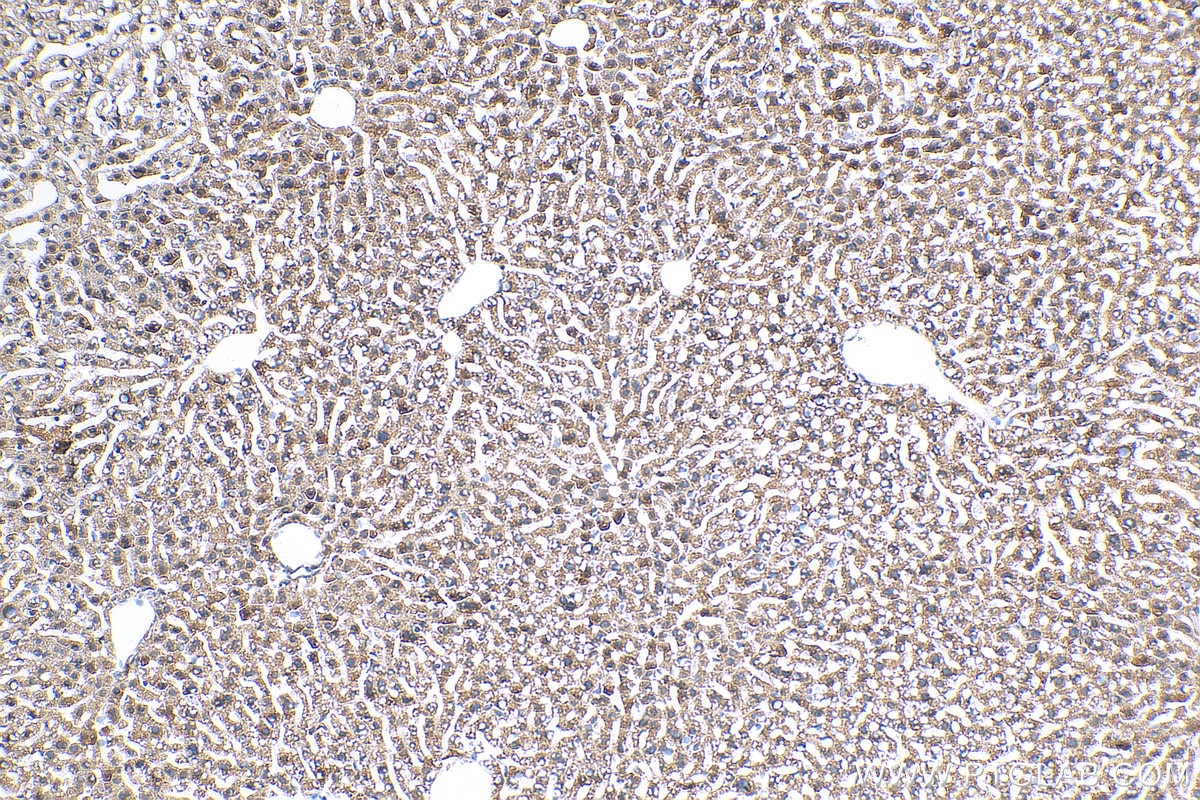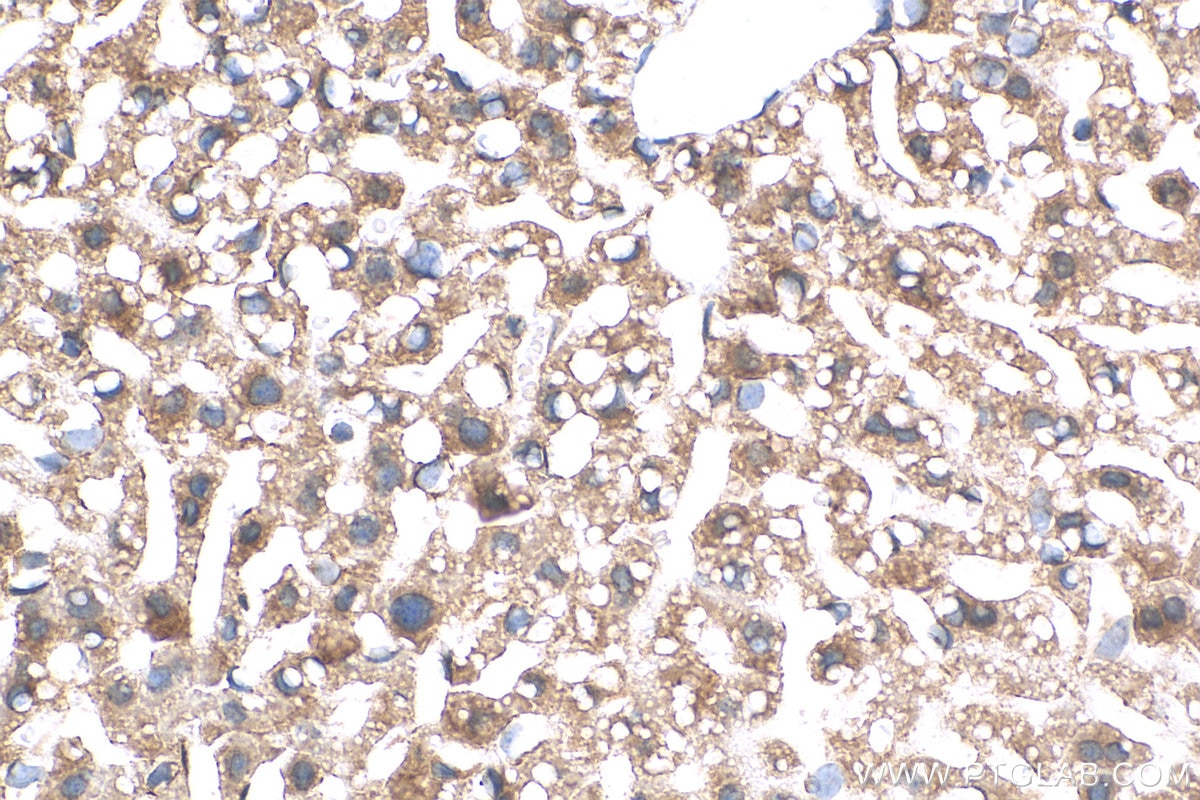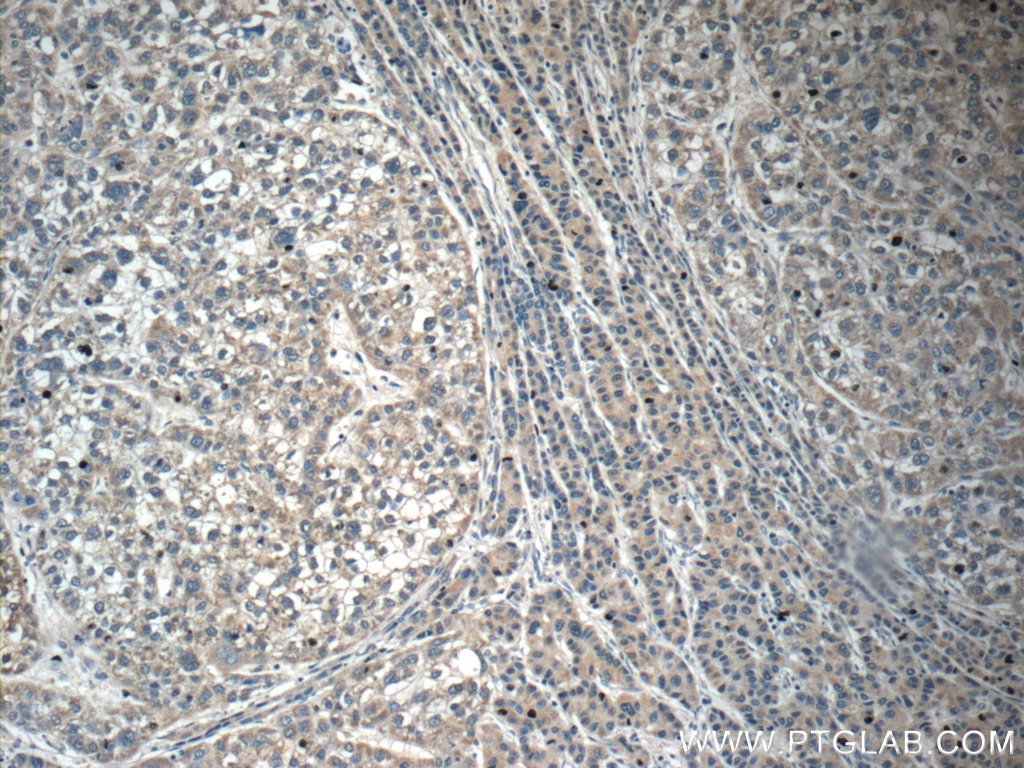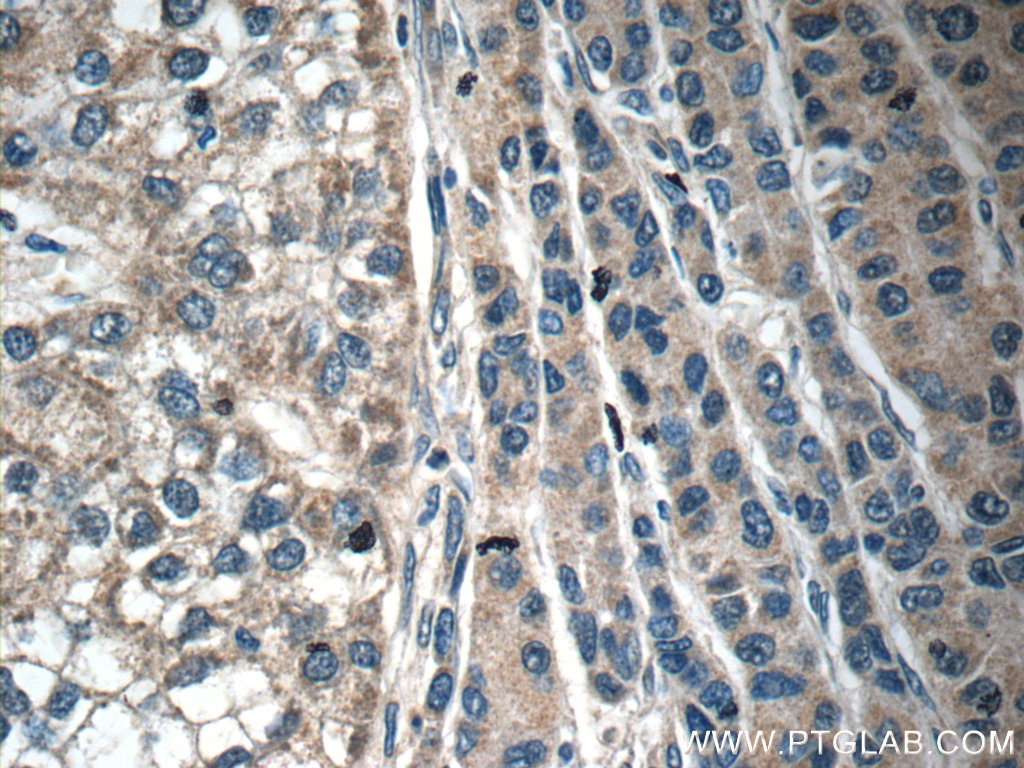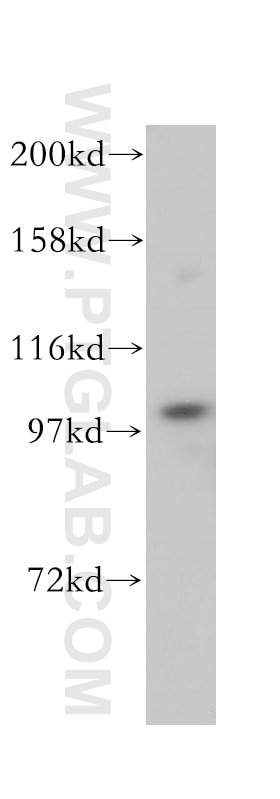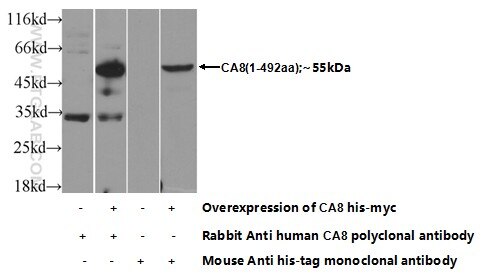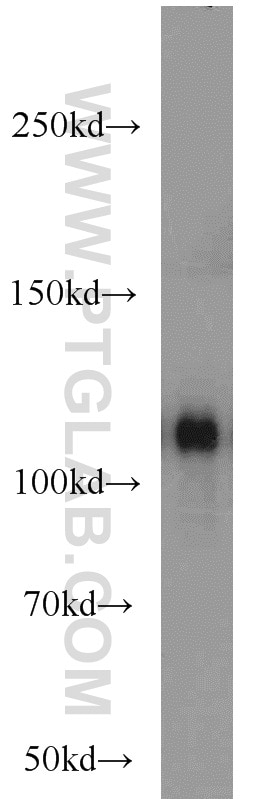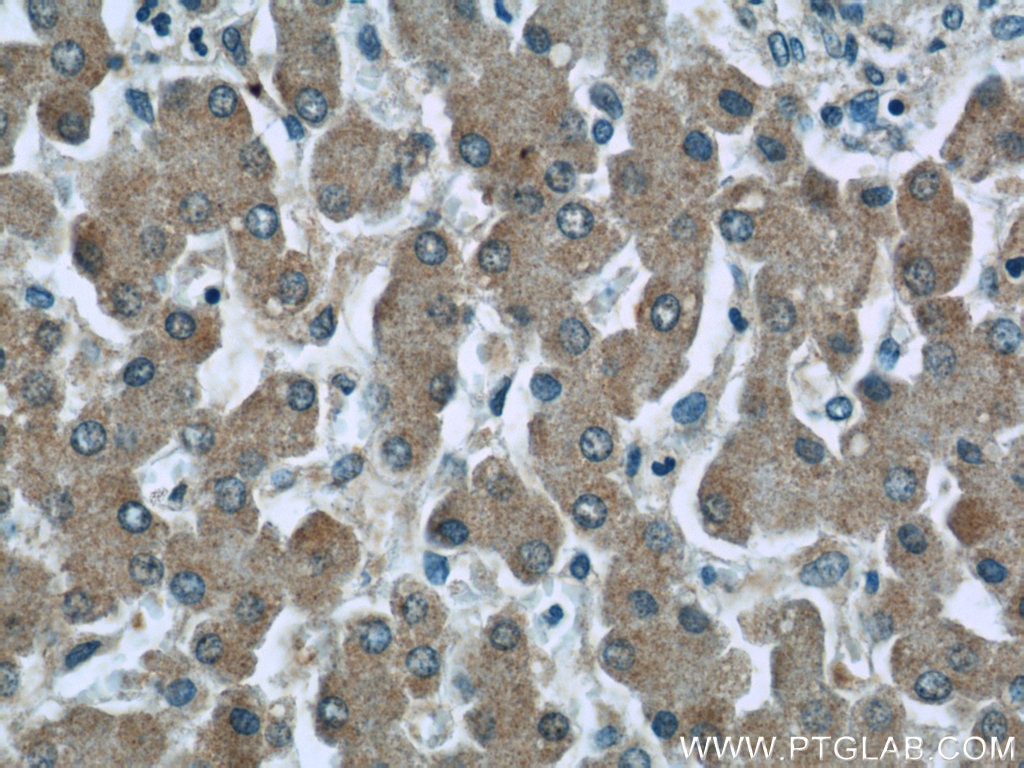Anticorps Polyclonal de lapin anti-C6
C6 Polyclonal Antibody for WB, IP, IHC, ELISA
Hôte / Isotype
Lapin / IgG
Réactivité testée
Humain, souris et plus (1)
Applications
WB, IP, IF, IHC, ELISA
Conjugaison
Non conjugué
N° de cat : 17239-1-AP
Synonymes
Galerie de données de validation
Applications testées
| Résultats positifs en WB | sang humain, |
| Résultats positifs en IP | tissu plasmatique humain |
| Résultats positifs en IHC | tissu hépatique de souris, tissu de cancer du foie humain il est suggéré de démasquer l'antigène avec un tampon de TE buffer pH 9.0; (*) À défaut, 'le démasquage de l'antigène peut être 'effectué avec un tampon citrate pH 6,0. |
Dilution recommandée
| Application | Dilution |
|---|---|
| Western Blot (WB) | WB : 1:500-1:2000 |
| Immunoprécipitation (IP) | IP : 0.5-4.0 ug for 1.0-3.0 mg of total protein lysate |
| Immunohistochimie (IHC) | IHC : 1:50-1:500 |
| It is recommended that this reagent should be titrated in each testing system to obtain optimal results. | |
| Sample-dependent, check data in validation data gallery | |
Applications publiées
| WB | See 2 publications below |
| IHC | See 2 publications below |
| IF | See 3 publications below |
Informations sur le produit
17239-1-AP cible C6 dans les applications de WB, IP, IF, IHC, ELISA et montre une réactivité avec des échantillons Humain, souris
| Réactivité | Humain, souris |
| Réactivité citée | rat, Humain |
| Hôte / Isotype | Lapin / IgG |
| Clonalité | Polyclonal |
| Type | Anticorps |
| Immunogène | C6 Protéine recombinante Ag11083 |
| Nom complet | complement component 6 |
| Masse moléculaire calculée | 934 aa, 105 kDa |
| Poids moléculaire observé | 105 kDa |
| Numéro d’acquisition GenBank | BC035723 |
| Symbole du gène | C6 |
| Identification du gène (NCBI) | 729 |
| Conjugaison | Non conjugué |
| Forme | Liquide |
| Méthode de purification | Purification par affinité contre l'antigène |
| Tampon de stockage | PBS avec azoture de sodium à 0,02 % et glycérol à 50 % pH 7,3 |
| Conditions de stockage | Stocker à -20°C. Stable pendant un an après l'expédition. L'aliquotage n'est pas nécessaire pour le stockage à -20oC Les 20ul contiennent 0,1% de BSA. |
Informations générales
The final consequence of complement activation is formation of the membrane attack complex (MAC), a multiprotein assembly that perforates cell membranes, forming transmembrane channels. C6 is 1 of 5 late-acting proteins of complement that participate in assembly and function of the MAC. The deduced C6 protein contains 934 amino acids, including a 21-amino acid N-terminal signal sequence and 2 N-glycosylation sites. Mutations in the C6 gene are associated with complement component-6 deficiency.
Protocole
| Product Specific Protocols | |
|---|---|
| WB protocol for C6 antibody 17239-1-AP | Download protocol |
| IHC protocol for C6 antibody 17239-1-AP | Download protocol |
| IP protocol for C6 antibody 17239-1-AP | Download protocol |
| Standard Protocols | |
|---|---|
| Click here to view our Standard Protocols |
Publications
| Species | Application | Title |
|---|---|---|
PLoS One Human mesenchymal stromal cells ameliorate complement induced inflammatory cascade and improve renal functions in a rat model of ischemia-reperfusion induced acute kidney injury. | ||
Oral Dis Analysis of Salivary Exosomal Proteins in Young Adults with Severe Periodontitis. | ||
Ann Diagn Pathol The histologic and molecular correlates of liver disease in fatal COVID-19 including with alcohol use disorder | ||
Ren Fail Effect of anti-C5 antibody on recuperation from ischemia/reperfusion-induced acute kidney injury. | ||
Ann Diagn Pathol The amplification of CNS damage in Alzheimer's disease due to SARS-CoV2 infection | ||
Nat Commun A ZFYVE21-Rubicon-RNF34 signaling complex promotes endosome-associated inflammasome activity in endothelial cells |
